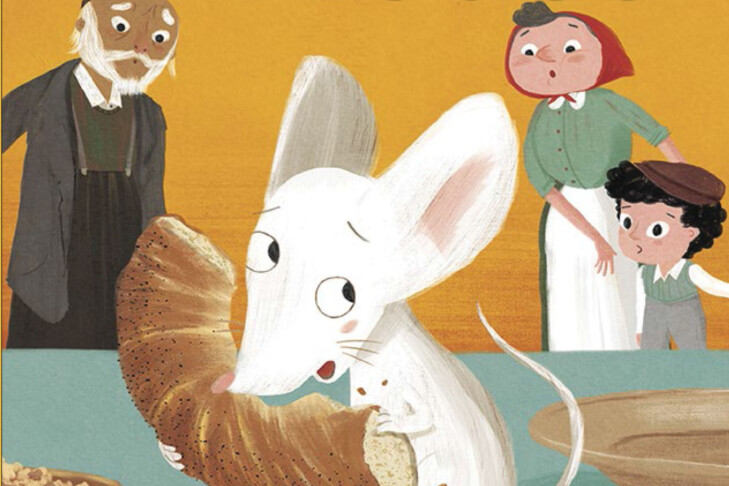The Passover Mouse by Joy Nelkin Wieder, illustrated by Shahar Kober; Doubleday Books for Young Readers, 2020;ISBN 9781984-895530; 24 pages including author’s note and glossary; $17.99
Somewhere in Eastern Europe, in a little Jewish village, a woman who had been preparing to burn the last pieces of collected chometz in anticipation of that evening’s Passover seder, was startled to see a white mouse jump up on her table, steal a piece of bread, and leave crumbs behind as it ran away.
“A mouse! A mouse! Took bread out of my house!” she yelled, alerting the rest of the villagers, who like her had been removing every little bit of chometz from their homes. What would happen if the mouse came into one of their homes? Would it drop crumbs, negating all their preparations? Would they have to search for chometz all over again?
Then they saw a black mouse with bread in its mouth, running from another villager’s house and into a third home. Next a cat leapt out of the third house (which belonged to the village matchmaker), and the villagers began to speculate. Perhaps the cat ate the mouse which took the bread, and if so, maybe there was no bread left to search for. Or should everyone search their homes again anyway?
The town’s rabbi went to the Talmud for reference, and after reading, told the villagers, that Halacha, Jewish law, had left the matter undecided. To be on the safe side, he urged those homeowners who had seen the animals with bread to search their homes once again for chometz.
The problem was there didn’t seem to be enough time for any one family to search for the chometz, and to prepare the food for the seder. So, the people of the town decided to form teams to do the searching, and other teams to take care of the cooking and setting the seder tables.
And so it happened that the people of the town not only searched and cooked together, they held their seders together too.
Author Joy Nelkin Wieder said the story was inspired by the Talmudic Trachtate Pesachim, in which the sages actually discussed the issue of what should happen if two mice should be seen with pieces of bread in their mouths, or if after such an occurrence, a cat should be seen with chometz.
Shahar Kober’s illustrations in this book are charming, especially a double-page spread in which eight villagers are seen searching, sweeping, brushing, and tablecloth shaking, while others are seen cooking and preparing the seder table.
If you’re looking for a book that you can read to your young children every Passover, this may well be the one.
Republished from San Diego Jewish World


























